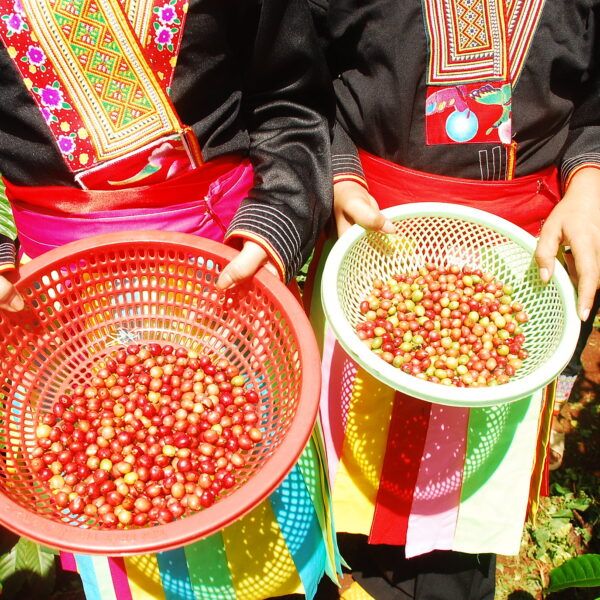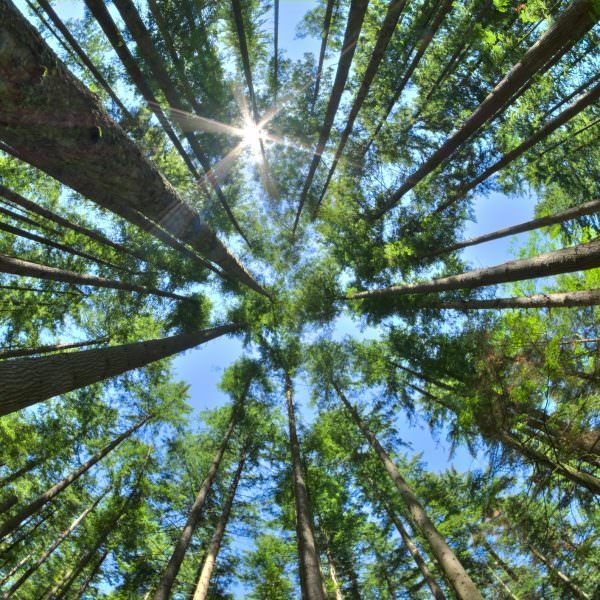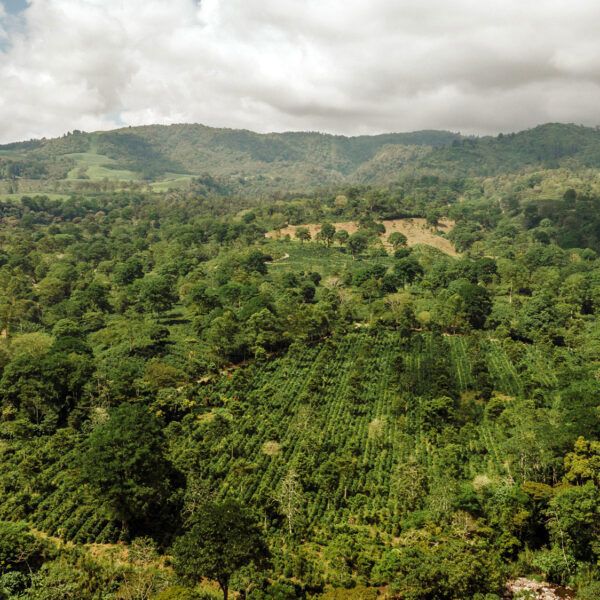The iconic tropical forests of Cameroon’s Western Highlands and South Region are disappearing. The cause: rampant deforestation driven by intensive farming. This threatens local habitats for gorillas, elephants, and countless other plant and animal species. Local communities feel deforestation’s effects, too, as it puts pressure on their livelihoods and rich cultural traditions where “sacred forests” have long held a special place as spaces for traditional ceremonies and ancestral connection.
To combat these urgent problems, we set our sights on three interconnected solutions: community-led landscape management, sustainable agriculture and local business, and strengthened rights for women and youth.
Community-led landscape management in Cameroon
Our recent and ongoing initiatives in Cameroon aimed to support rural communities in several critical forest landscapes: the Bamboutos mountains, the Bana-Bangangté-Bangou mountains, the sacred forests across the Western Highlands, and the southern periphery of the South Region’s Dja Reserve. This began with the establishment of two community-led Landscape Management Boards (LMBs) and nine Municipal Landscape Management Commissions (MLMCs) across the west and northwest regions. Representatives from these committees collaborated with the Rainforest Alliance to develop sustainable landscape management plans to reduce pressure on the forests. By leading the process, they made conservation a priority while creating economic incentives for sustainable land and forest management.
In a win for gender inclusivity, the stakeholders of these priority landscapes reached a landmark agreement that at least 30 percent of each decision-making body should be women. This had an incredible impact: Women in these communities, supported by our women’s leadership program, stepped forward and surpassed the benchmark, making up between 32 and 33 percent of each committee.
A culture of conservation
In the Western Highlands lie some of Cameroon’s sacred forests—important cultural sites for ancestral communication and ritual ceremonies. But these forests, historically protected by traditional laws, are facing the same deforestation threat as the rest of the region. That’s why we worked with 11 traditional chiefs to gain their support to take forest conservation measures that respected local customs and traditions. Together, we created eight tree nurseries in the sacred forests, growing a total of 49,000 tree seedlings to help maintain these sacred places for generations to come.
Seeing the difference in sustainable agriculture
To counter destructive farming and reduce the use of chemicals, we trained a total of 3,500 farmers on best farming practices. These included techniques from plot preparation and potato sowing, to manufacturing organic fertilizers and creating natural insect repellents. The training also covered topics like good harvesting and post-harvest practices, and how to safely and responsibly manage pesticide containers.
“We are seeing a difference in the way crops are growing, like corn, beans, and potatoes. Crops grown with biopesticides last longer and we don’t feel the urge to harvest, while those grown with a lot of chemicals rot faster so we need to harvest and sell those quickly,” said Djounkeng Donfack Nadege, a participant. “People see the difference and ask to learn from us, even though they were skeptical in the past.”
Women and youth at the forefront
Although they’re often disadvantaged, women and youth are essential allies in sustainability. A key focus of our work in Cameroon was to strengthen the rights of women and youth, especially young women, by engaging them in sustainable landscape management. The Rainforest Alliance helped them develop the leadership skills needed to get involved in LMBs, MLMCs, and other decision-making spaces.
To support women and young people to earn more money, we offered trainings and materials to jumpstart their local businesses. We trained some participants in renewable energy technologies, including the production and use of improved cooking stoves and ecological charcoal. Others learned sustainable beekeeping, selling honey for beauty products, beeswax candles, and more.
In the below video, participants and colleagues in the Western Highlands talk about the impact this work has had in their lives and on their hopes for the future.
Leadership spotlight: The story of Ahi Jamilatou
Ahi Jamilatou, a quiet and reserved young woman, was raised in a pastoralist family in an Indigenous Mbororo community. When she started our training in sustainable farming practices, she noticed a change in herself: She was developing the confidence and knowledge to speak up, knowing that she could make a positive change in her community.
Through our women’s leadership program and exchange visits to Ghana, Jamilatou honed her speaking skills and became an active leader in community development. She helped organize an initiative to encourage the use of sustainable farming techniques and taught her neighbors how to produce ecological charcoal as an alternative to chopping down trees for fuel. Her dedication and leadership earned her the trust of her community. Now, she acts as a representative for both an LMB and MLMC, advocating for women’s inclusion in landscape management.
Diverse voices strengthen communities
Ahi Jamilatou’s journey from a quiet community member to a confident leader is awe-inspiring—and hers is just one of many stories. Today, she confidently speaks at LMB meetings, makes proposals, and uplifts women’s voices in the Mbororo community. Inspired by her example, more of her peers are stepping forward, voicing their concerns, and taking leadership roles.
Strong communities require many voices. When we remove barriers for women and youth, we improve the well-being of rural communities and the forests they rely on.




